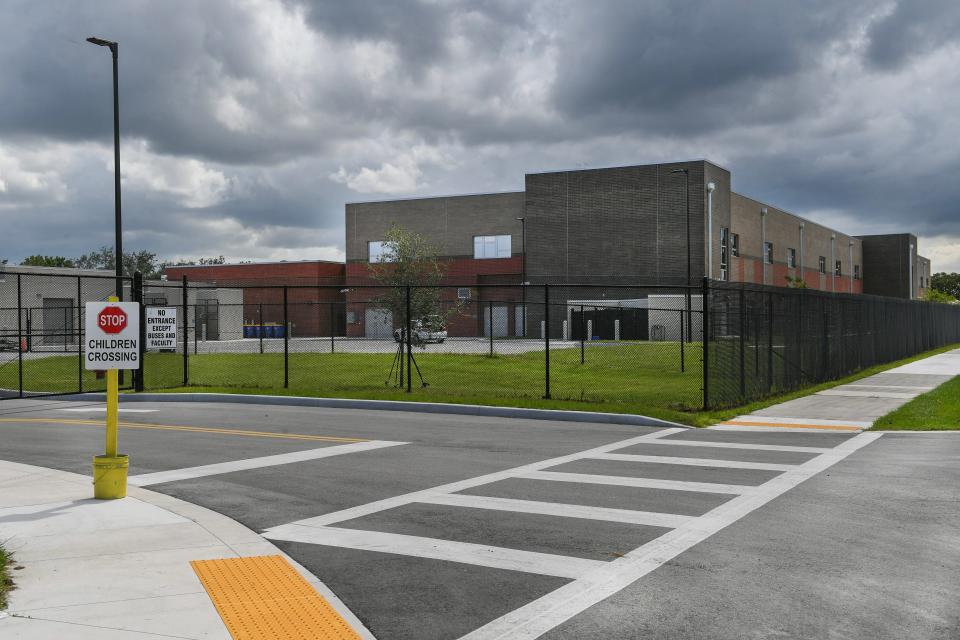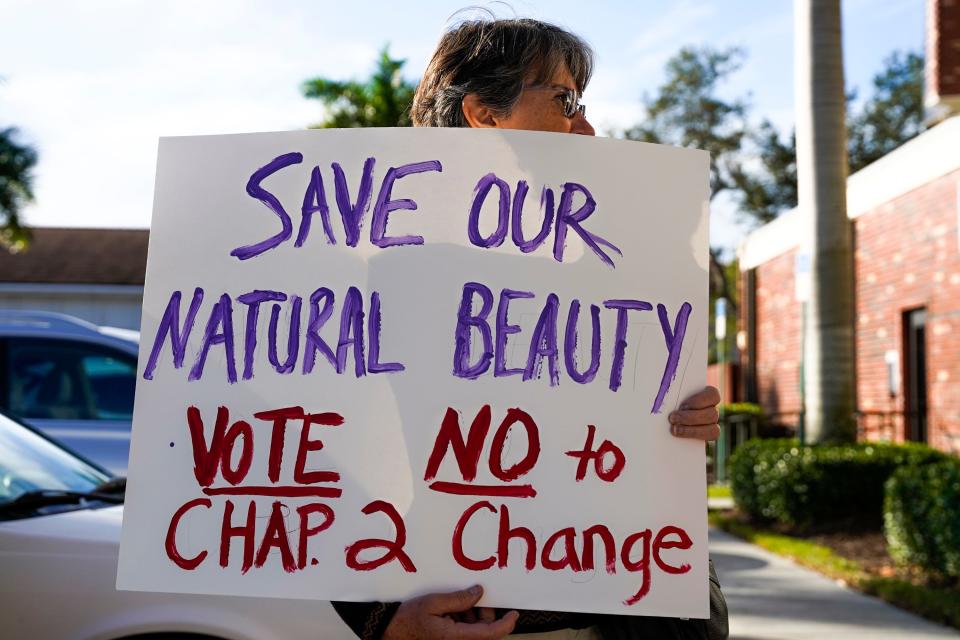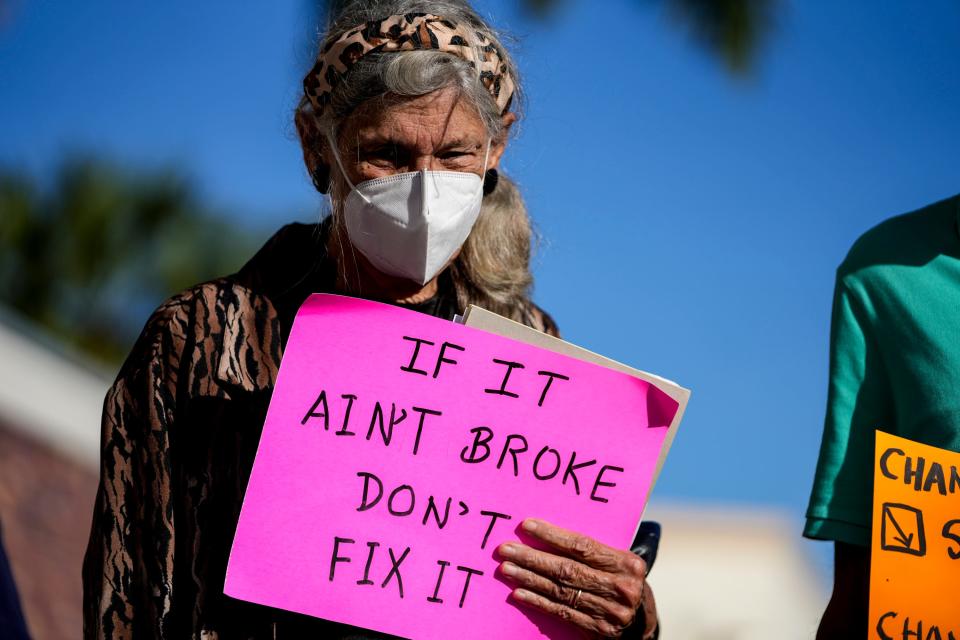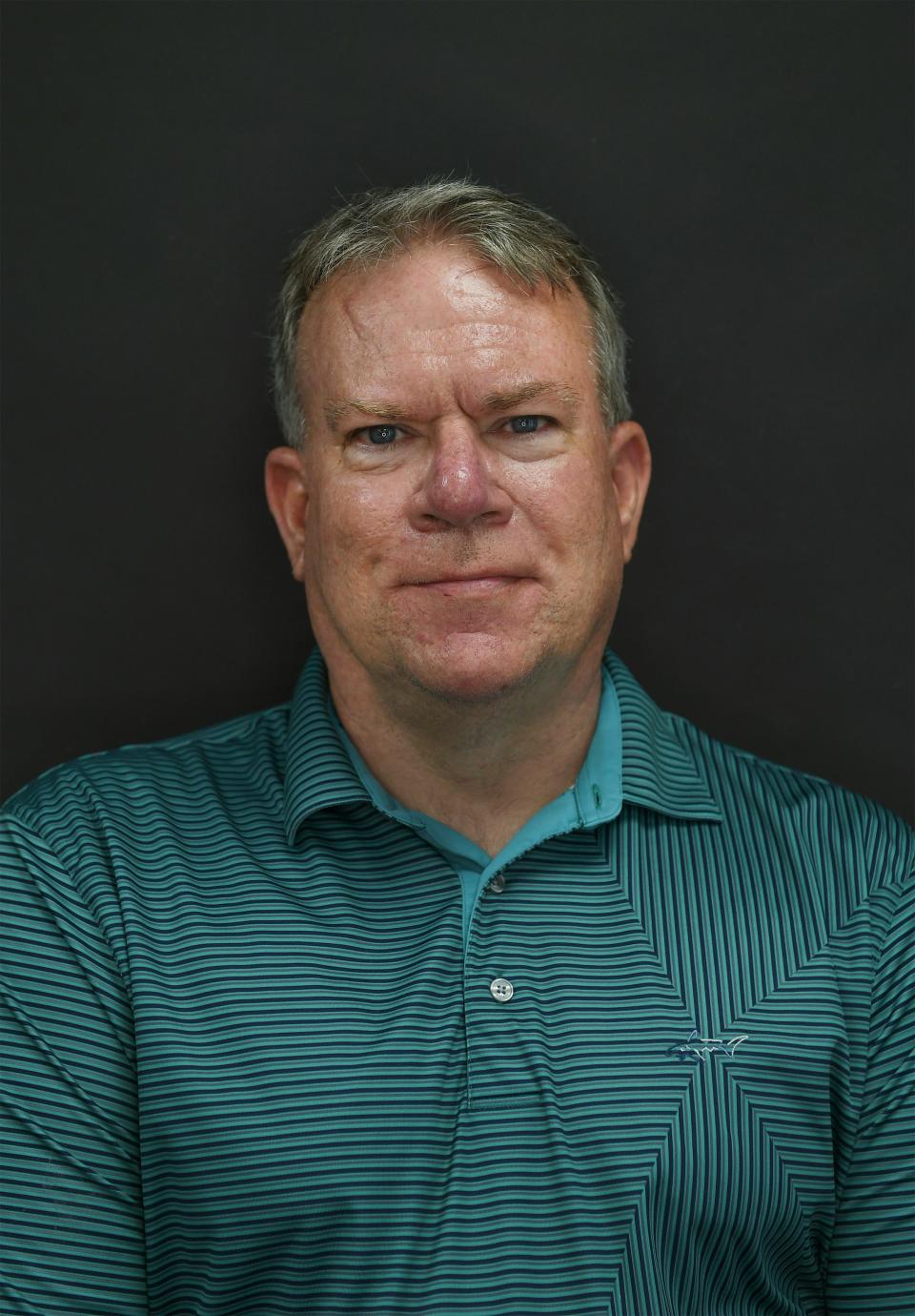Could Treasure Coast local governments head off controversial developments by buying land?
If a group of elected officials keeps talking long enough, sometimes the results can be surprisingly productive.
That was the case last week, when the Martin County Commission was discussing a controversial apartment complex planned for Palm City.
Over the course of an hour and a half Aug. 8, commissioners heard dozens of local residents explain why they thought a 90-unit complex near Martin Highway and Palm City School Avenue would be wrong for their community.
They raised concerns about increased traffic, particularly with Palm City Elementary School and Hidden Oaks Middle School nearby. They worried new development could worsen flooding in Danforth Creek. And they said the three three-story buildings set near the highway wouldn't fit the neighborhood's character.
If you've followed the recent history of development cases along the Treasure Coast, you might have expected these residents to go home disappointed.
This case, however, had a twist: JAMSZ Properties Inc., the landowner, had presented commissioners the alternative of buying the 6-acre parcel instead of approving the development plans.
Given a politically expedient out, commissioners took it. By a 4-1 vote, the commission authorized staff to negotiate a purchase at the proposed asking price of $4 million.

A potential game changer
If the deal gets done, which seems likely unless one or more commissioners change their minds, the land will likely be preserved as a park or open space, which is what residents said they want.
This feels like it could be a game-changing moment in terms of the future of development along the Treasure Coast.
Commission Chairman Ed Ciampi cited other instances in which the commission has purchased private property. And the Palm City residents tried to make the case there were special circumstances that justified government intervention to prevent this particular project from moving forward.
But really, this case isn't so different from many other development projects along the Treasure Coast that face or have faced significant public opposition.

Where to draw the line?
I'd be willing to bet my last dollar Jensen Beach residents who oppose the Riverlight project next to The Snook Nook would prefer for commissioners to buy that property and convert it into a park, too.
Although attitudes toward growth and development seem a bit more relaxed north of the border in St. Lucie County, I'm guessing there are residents there who would like to see their county commission purchase the 629 acres proposed for development by the P1 Motor Club for the same purpose and the same reasons.
I'm sure the commissioners who voted to buy the Palm City property would argue those other examples involve land tracts that are larger and/or more expensive, but now we're arguing about price, not principles.
Virtually everywhere in our three-county region where neighbors are worried about undesirable development, they would prefer to see the property in question converted to park or conservation land.

Time to think big picture
The Martin County commissioners acknowledged as much last week, which is where the discussion really got interesting.
Ciampi told his colleagues that every piece of vacant land (and I would add many that are not vacant) are essentially "in play," with developers bidding to buy and build on them.
"Everyone gets to a number where they'll sell," Ciampi said. And he's probably right about that, too.
So if local governments want to stop at least some of that development from occurring, then one solution is to get into the land-buying business themselves.
But it's an expensive solution. In the Palm City case, commissioners spent a considerable amount of time trying to figure out how they would scrape together the $4 million needed to meet JAMSZ's asking price.
Commissioner Sarah Heard, who cast the dissenting vote on the purchase, said it's not practical for local government to buy its way out of all unpopular development projects.
However, at least three of her colleagues said the county needs to identify a strategy and funding source for future conservation land purchases.
"We are going to have to have a broader discussion about how we acquire land," Commissioner Doug Smith said. "We need a long-term funding source, and it has to be in the millions of dollars. Because that's what's at stake."

Commissioner Stacey Hetherington and Ciampi agreed, with Ciampi floating the idea of holding a referendum next year on a half-cent sales tax to fund those types of purchases.
A heavy, but necessary, political lift
That idea has come up before, as recently as last year. Commissioners decided then the timing wasn't right to put that type of spending measure on the ballot.
Reality check: There never will be a "good" time to ask people to raise their own taxes. There might be a right time, though, if enough citizens can be persuaded the money raised would be well spent.
Remember last year, Indian River County residents overwhelmingly approved a property tax increase referendum to fund conservation purchases.
Another idea would be a referendum to raise a local-option tax on real estate purchases. For example, Nantucket, Massachusetts levies a 2% real estate transfer tax with the money set aside for conservation lands.
However, Florida law currently allows local-option real estate transfer tax funds only to be spent on affordable housing, so that would require a legislative change at the state level before it could be considered. Even if it were an option, a real estate transfer tax would raise considerably less money than a sales tax increase.
Maybe there are other funding sources out there, but none of them are painless to implement.
What's important is the Palm City project sparked a conversation Martin County and other communities along the Treasure Coast need to have. With the state's growth management laws increasingly stacked in developers' favor, the government land-buying option may be the last best hope of saving at least some of Florida from being bulldozed into oblivion.
This column reflects the opinion of Blake Fontenay. Contact him via email at bfontenay@gannett.com or at 772-232-5424.
This article originally appeared on Treasure Coast Newspapers: Palm City case sparks needed debate about government land-buying plans

